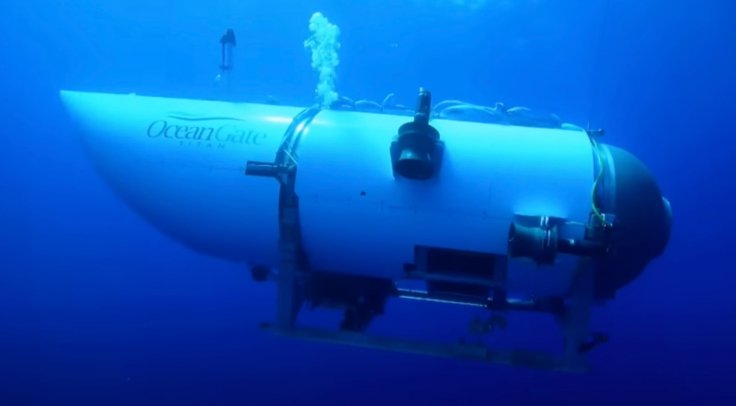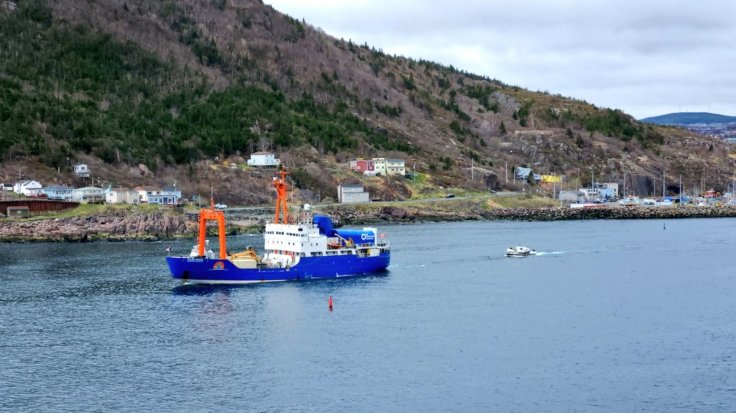If rescue teams successfully manage to retrieve the Titanic-bound submersible that vanished at great depths beneath the waters near Newfoundland on Sunday morning, it would mark the most profound recovery operation ever conducted. This achievement hinges on their ability to accomplish the mission before the submersible runs out of oxygen.
On Monday night, Coast Guard crews announced that they have a limited window of 70 to 96 hours to locate the missing tourist submersible operated by OceanGate Expeditions and carry out the rescue operation for the five tourists on board. This effort would be unprecedented and set a new record if successful.
Desperate Search On

This comes as it was revealed that the tourist submersible, carrying five people, including British billionaire Hamish Harding, that went missing last 'pinged' while it was believed to be directly above its intended target, the Titanic.
The submersible, which belongs to OceanGate Expeditions, was on a deep-sea expedition with a crew of five people, including company CEO Stockton Rush, French explorer PH Nargeolet, and Hamish Harding.
Their mission involved exploring the wreckage of the Titanic, located approximately 12,500 feet below the surface, as part of a high-priced tour.

The crew set off at around 4 am on Sunday but lost contact with their main vessel, MV Polar Prince, after an hour and 45 minutes into the planned two-hour descent. They are equipped with enough oxygen to sustain them until 7 am EST on Thursday.
However, as the race against time intensified, rescuers acknowledged the possibility that the submersible could have become trapped amidst the wreckage of the Titanic. Despite being located 370 miles from Newfoundland, Canada, the Titanic lies within US waters.
Experts in submarine operations also expressed concerns that the submersible may be stuck at a depth beyond the reach of a manned rescue sub, like the US Navy's sub, which is limited to 2,000 feet.
It is now being speculated that the only viable approach to reach the submersible could involve employing a remotely operated vehicle (ROV) with a maximum depth capability of 20,000 feet, the Daily Mail reported.
The submersible, named 'Titan,' lost communication with the surface for a minimum of seven hours and appeared to be nearing its intended destination.
Titan, the submersible in question, is known to maintain communication by transmitting a signal, or "ping," to the Polar Prince every 15 minutes. The most recent ping was received around 10 am EST while the submersible was positioned above the Titanic wreckage.

At that critical moment, a state of chaos unfolded, prompting a distress call to be sent to the Boston branch of the US Coast Guard. They are currently spearheading an operation aimed at conducting what could potentially be the most profound underwater rescue mission in history.
Mission Possible?
The submersible's oxygen supply, which was initially estimated to last for 96 hours, has been steadily depleting since around 6 a.m. on Sunday, as indicated by Concannon. Concannon, who had planned to be part of the dive but had to cancel due to other client commitments, provided this information.

The search and rescue operation is being conducted by the Coast Guard, who are leading the efforts from both aerial and maritime perspectives. Canadian authorities are also lending their support to the mission.
"It is a remote area and it is a challenge to conduct a search in that remote area but we are deploying all available assets to make sure that we can locate the craft and rescue the people onboard," Rear Adm. John Mauger, a commander for the U.S. Coast Guard, said at a press conference.
However, former Coast Guardsman John Mixson told Fox News it was an "extremely serious and dire situation," adding: "It's hard to say whenever you just lose total communications in a situation like that what actually happened until you find the vessel.

"This isn't a common occurrence at all. Obviously, something very rapid and very tragic took place."
OceanGate, the company that owns the submersible states on its website that no prior diving experience is required, except for the ability to board small boats in rough seas, has reported receiving assistance from government agencies and other deep-sea companies.
The expedition, spanning eight days, involves a two-hour descent and ascent to the Titanic wreck, making the total duration of the trip approximately eight to ten hours.
David Concannon, an advisor to OceanGate who had intended to be part of the expedition, revealed that efforts are underway to promptly bring a remotely operated vehicle (ROV) capable of reaching depths of 20,000 feet to the site.
Additionally, various government agencies and deep-sea companies, C-130 and P-8 aircraft from the United States and Canada have been deployed to aid in the search. The search area is located in a remote section of the ocean, approximately 900 miles east of Cape Cod and 370 miles southeast of the southernmost point of Newfoundland.









